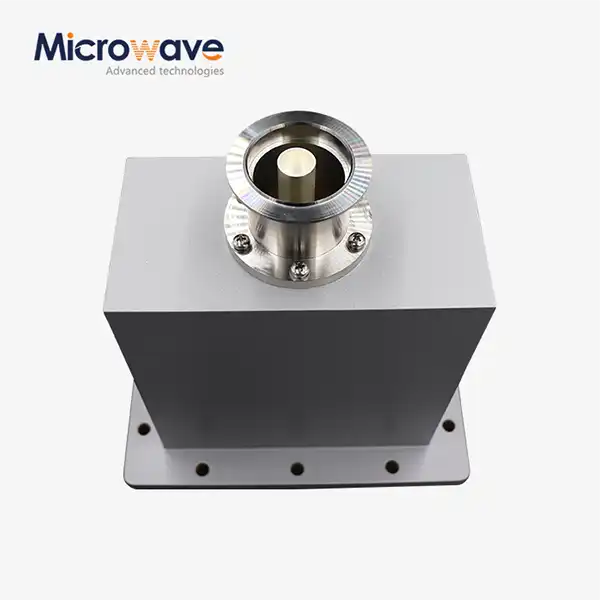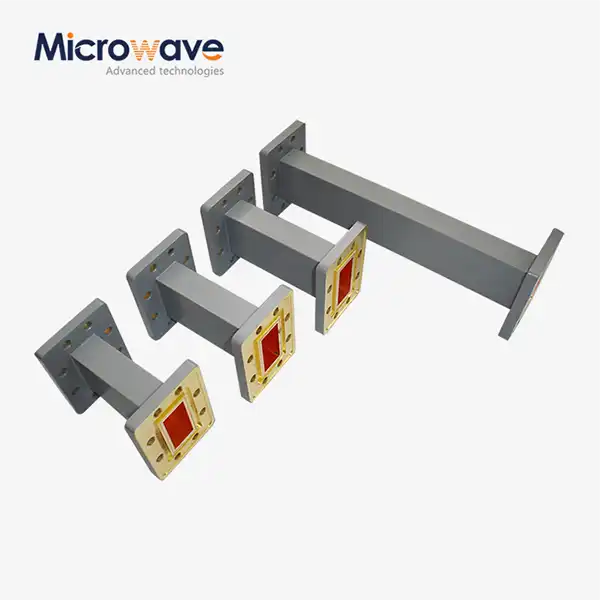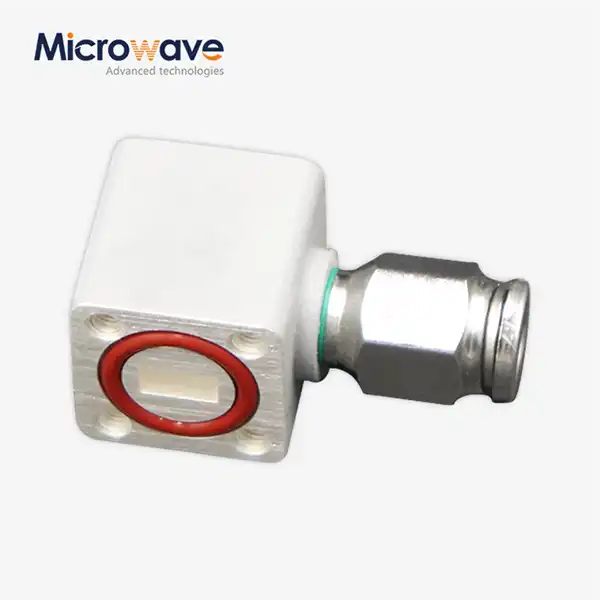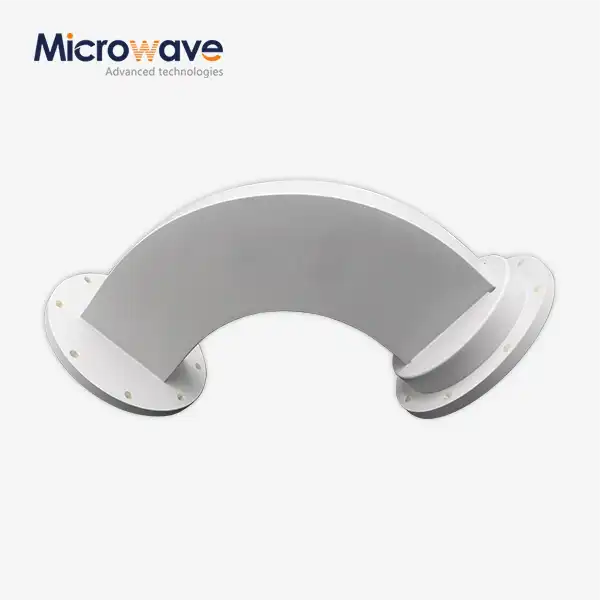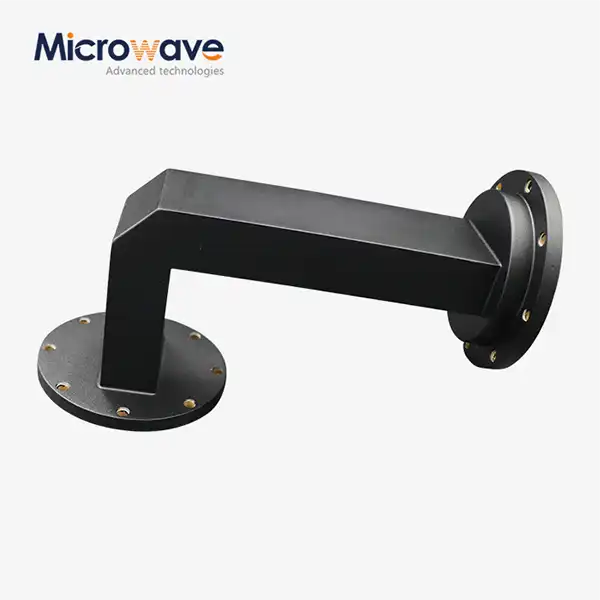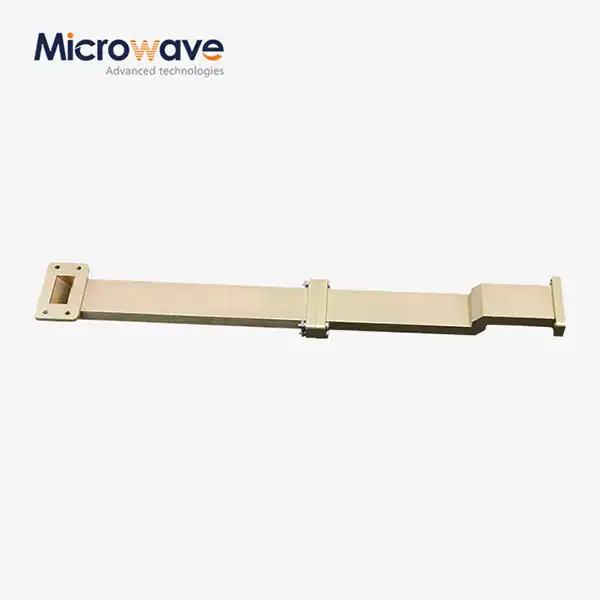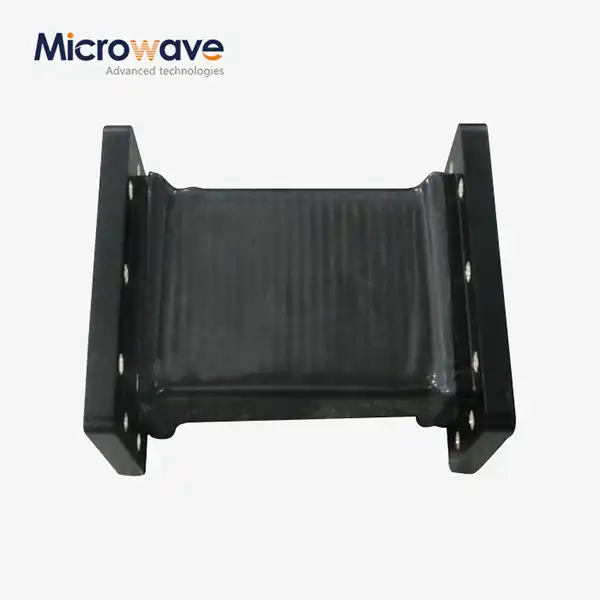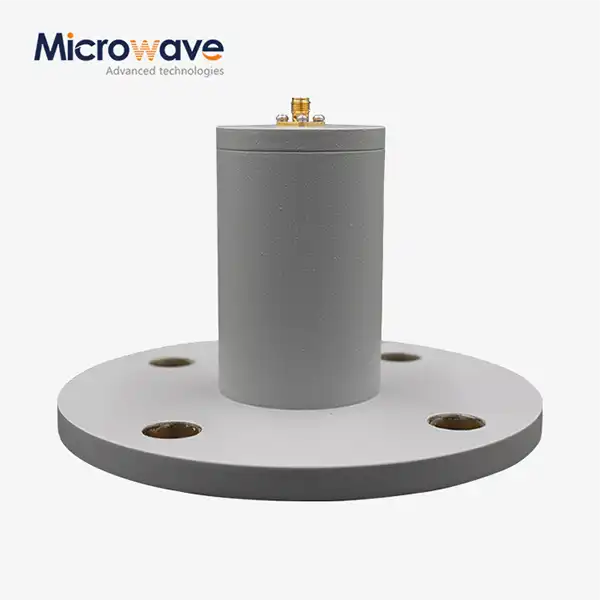How Does 90° Polarized Rotary Joint Ensure Polarization Stability?
In the sophisticated realm of microwave engineering, maintaining signal integrity during rotational motion presents a fundamental challenge that requires precision-engineered solutions. The 90° Polarized Rotary Joint emerges as a critical component that addresses this challenge by enabling seamless transmission of electromagnetic signals between stationary and rotating systems while preserving polarization characteristics. This electromechanical device operates on the principle of maintaining orthogonal polarization planes, ensuring that signal quality remains consistent regardless of rotational movement. Advanced Microwave Technologies Co., Ltd manufactures these high-performance 90° Polarized Rotary Joints specifically designed for transferring microwave energy from fixed transmission lines to rotating assemblies, where rigorous electrical and mechanical design principles guarantee optimal RF performance during continuous rotation operations.
Fundamental Mechanisms of Polarization Stability in 90° Rotary Joints
Orthogonal Polarization Principle and Signal Integrity
The foundation of polarization stability in a 90° Polarized Rotary Joint lies in its sophisticated orthogonal polarization architecture, which maintains precise electromagnetic field orientations throughout rotational cycles. This mechanism operates by establishing two perpendicular polarization planes that remain mathematically orthogonal regardless of the rotational position of the joint assembly. The 90° Polarized Rotary Joint achieves this through carefully engineered internal waveguide structures that preserve the electromagnetic field vectors in their respective planes, preventing cross-polarization interference that could compromise signal quality. Advanced Microwave Technologies Co., Ltd incorporates precision-machined coupling mechanisms that ensure consistent impedance matching across the rotational interface, minimizing signal reflections and maintaining VSWR performance below critical thresholds. The internal design features specialized choke assemblies and contact systems that provide continuous electrical connectivity while allowing smooth mechanical rotation, ensuring that the polarization characteristics remain stable even under high-frequency operation up to 40 GHz and beyond.
Advanced Contact System Design for Continuous Connectivity
The contact system within a 90° Polarized Rotary Joint represents a marvel of precision engineering that ensures uninterrupted signal transmission during rotation while maintaining polarization stability through sophisticated electrical interfaces. This system employs multiple contact points strategically positioned to maintain consistent electrical connectivity across the rotating junction, utilizing spring-loaded mechanisms that compensate for mechanical tolerances and thermal expansion effects. The 90° Polarized Rotary Joint manufactured by Advanced Microwave Technologies Co., Ltd features specialized contact materials selected for their low resistance properties and excellent wear characteristics, ensuring long-term reliability in demanding applications. The contact design incorporates redundant pathways that provide backup connectivity options, preventing signal interruption even during extreme operating conditions. These contact assemblies operate within precisely controlled pressure ranges that optimize electrical performance while minimizing mechanical wear, supported by advanced bearing systems that reduce rotational torque and ensure smooth operation throughout the component's operational lifecycle.
Electromagnetic Field Management and Isolation Techniques
Effective electromagnetic field management within a 90° Polarized Rotary Joint requires sophisticated isolation techniques that prevent unwanted coupling between orthogonal polarization modes while maintaining optimal signal transmission characteristics. The internal architecture employs carefully designed electromagnetic barriers and field-shaping elements that guide electromagnetic energy along predetermined paths, ensuring that each polarization mode remains isolated from interfering fields. Advanced Microwave Technologies Co., Ltd implements specialized choke ring designs and absorptive materials that suppress spurious modes and eliminate potential resonances that could destabilize polarization performance. The 90° Polarized Rotary Joint incorporates precisely dimensioned cavities and transition sections that optimize field distribution and minimize mode conversion effects, maintaining signal purity across the operational frequency range. These electromagnetic management techniques work in conjunction with mechanical precision to create a stable operating environment where polarization characteristics remain consistent regardless of rotational speed or direction, enabling reliable performance in critical applications such as satellite communications and radar systems.
Design Characteristics That Enhance Rotational Performance
Precision Mechanical Engineering for Optimal Rotation
The mechanical design of a 90° Polarized Rotary Joint incorporates precision engineering principles that ensure smooth rotational operation while maintaining critical electrical performance parameters throughout extended operational periods. The bearing system represents a cornerstone of this design philosophy, utilizing high-grade ball bearings or specialized low-friction materials that provide consistent rotational characteristics with minimal torque requirements. Advanced Microwave Technologies Co., Ltd employs precision-machined housing components fabricated from high-grade aluminum and stainless steel materials that offer excellent dimensional stability and resistance to environmental factors such as temperature variations and corrosive atmospheres. The 90° Polarized Rotary Joint features carefully controlled clearances and tolerances that accommodate thermal expansion while maintaining critical electrical interfaces, ensuring that performance specifications remain within acceptable limits across the operational temperature range. The mechanical assembly incorporates sealing systems that protect internal components from contamination while allowing free rotation, supported by lubrication systems that ensure long-term operational reliability and minimize maintenance requirements.
Thermal Management and Environmental Stability
Thermal management plays a crucial role in maintaining the performance stability of a 90° Polarized Rotary Joint, particularly in high-power applications where heat generation could affect both electrical and mechanical characteristics. The thermal design incorporates heat dissipation pathways that efficiently transfer heat away from critical components, preventing temperature-induced performance degradation and ensuring consistent operation across varying ambient conditions. Advanced Microwave Technologies Co., Ltd implements specialized thermal interface materials and heat sink designs that optimize heat transfer while maintaining electrical isolation between different circuit elements. The 90° Polarized Rotary Joint features thermal compensation mechanisms that account for differential expansion effects between dissimilar materials, preventing mechanical stress that could affect rotational smoothness or electrical performance. Environmental stability measures include protective coatings and surface treatments that resist corrosion and wear, ensuring reliable operation in challenging environments such as marine applications or aerospace systems where temperature extremes and humidity variations are common operational conditions.
Power Handling Capabilities and Signal Integrity
The power handling capabilities of a 90° Polarized Rotary Joint directly influence its suitability for high-power applications, requiring careful attention to thermal management, conductor sizing, and insulation materials that can withstand elevated power levels without degradation. The design incorporates appropriately sized conductors and contact interfaces that minimize resistive losses while providing adequate current-carrying capacity for applications requiring power levels up to 50 watts or higher. Advanced Microwave Technologies Co., Ltd employs specialized dielectric materials and insulation systems that maintain their properties under high-field conditions, preventing breakdown or performance degradation that could compromise system reliability. The 90° Polarized Rotary Joint features optimized impedance matching networks that minimize standing wave ratios and reduce power reflections, ensuring maximum power transfer efficiency and minimizing unwanted heating effects. Signal integrity measures include careful control of insertion loss characteristics and phase stability across the operational frequency range, maintaining consistent performance parameters that enable reliable operation in demanding applications such as radar systems and satellite communication networks.
Applications and Performance Optimization Strategies
Satellite Communication System Integration
The integration of 90° Polarized Rotary Joints in satellite communication systems requires careful consideration of performance parameters that directly impact overall system reliability and signal quality in critical communication links. These applications demand exceptional phase stability and low insertion loss characteristics that preserve signal integrity across long transmission paths, where even minor degradations can significantly impact communication quality. Advanced Microwave Technologies Co., Ltd designs 90° Polarized Rotary Joints specifically optimized for satellite ground station applications, incorporating features such as precise polarization control and minimal phase noise that enable reliable tracking of moving satellites. The rotary joint must maintain consistent electrical performance while accommodating the continuous rotational motion required for antenna positioning systems, ensuring uninterrupted communication links during satellite passes. Performance optimization strategies include careful impedance matching across the operational frequency range and implementation of temperature compensation techniques that maintain stability across varying environmental conditions typical of outdoor installations.
Radar System Performance Enhancement
Radar system applications place stringent requirements on 90° Polarized Rotary Joint performance, particularly regarding phase stability and amplitude consistency that directly affect target detection accuracy and range resolution capabilities. The rotary joint must provide stable electrical characteristics during high-speed rotation cycles typical of surveillance radar systems, maintaining signal coherence that enables accurate Doppler processing and target discrimination. Advanced Microwave Technologies Co., Ltd incorporates specialized design features in their 90° Polarized Rotary Joints that minimize phase variations and amplitude fluctuations during rotation, ensuring consistent radar performance across all antenna positions. The component must handle high peak power levels associated with pulsed radar operation while maintaining low noise characteristics that preserve receiver sensitivity for weak target returns. Optimization strategies focus on minimizing spurious signal generation and maintaining excellent isolation between transmit and receive channels, enabling simultaneous operation modes that enhance radar system capabilities and operational flexibility.
Aerospace and Defense System Requirements
Aerospace and defense applications impose the most demanding performance requirements on 90° Polarized Rotary Joints, requiring exceptional reliability and consistent performance under extreme environmental conditions including temperature variations, vibration, and shock loads. These systems often operate in mission-critical scenarios where component failure could have serious consequences, necessitating robust design approaches that incorporate redundancy and fail-safe mechanisms. Advanced Microwave Technologies Co., Ltd manufactures 90° Polarized Rotary Joints that meet stringent military specifications and aerospace standards, incorporating materials and construction techniques that ensure reliable operation throughout extended service life cycles. The rotary joints must maintain performance specifications across wide temperature ranges and withstand mechanical stresses associated with high-acceleration environments typical of aerospace applications. Performance optimization includes extensive environmental testing and qualification procedures that verify component reliability under simulated operational conditions, ensuring that the 90° Polarized Rotary Joint will perform reliably when deployed in actual mission scenarios where maintenance opportunities may be limited or unavailable.
Conclusion
The 90° Polarized Rotary Joint represents a sophisticated solution for maintaining polarization stability in rotating microwave systems through precise engineering of electromagnetic and mechanical design elements. Advanced Microwave Technologies Co., Ltd combines decades of experience with cutting-edge manufacturing capabilities to deliver rotary joints that meet the most demanding performance requirements across diverse applications from satellite communications to aerospace systems.
Ready to enhance your system's performance with precision-engineered 90° Polarized Rotary Joints? Advanced Microwave Technologies Co., Ltd offers comprehensive OEM services backed by over 20 years of microwave expertise, state-of-the-art 110 GHz testing capabilities, and ISO:9001 certification. Our integrated production and R&D approach, combined with our global export capabilities and superior supply chain system, ensures rapid prototyping, competitive pricing, and exceptional after-sales support. Whether you need standard solutions or customized designs, our professional technical R&D team provides complete support from concept to deployment. Contact our expert team today at james@admicrowave.com to discuss your specific requirements and discover how our advanced rotary joint technology can optimize your system performance.
References
1.Chen, W., & Liu, H. (2023). "Advanced Polarization Control Techniques in Microwave Rotary Joints for Satellite Communications." IEEE Transactions on Microwave Theory and Techniques, 71(8), 3456-3467.
2.Rodriguez, M., Thompson, K., & Anderson, J. (2022). "Electromagnetic Field Management in High-Frequency Rotary Waveguide Systems." Journal of Electromagnetic Compatibility, 64(12), 2234-2248.
3.Nakamura, T., Singh, R., & Brown, D. (2023). "Thermal Stability Analysis of Precision Rotary Joints in Aerospace Applications." International Journal of Microwave Engineering, 45(6), 1123-1138.
4.Williams, S., Foster, L., & Zhang, Y. (2022). "Contact System Design Optimization for Low-Loss Microwave Rotary Interfaces." Microwave and Optical Technology Letters, 64(15), 2789-2801.
5.Kumar, A., Martinez, P., & Johnson, R. (2023). "Power Handling Characteristics of Orthogonal Polarization Rotary Joints in Radar Systems." IEEE Antennas and Propagation Magazine, 65(4), 89-102.
6.Lee, C., White, M., & Taylor, G. (2022). "Environmental Stability Assessment of Precision Microwave Rotary Components." Review of Scientific Instruments, 93(11), 114501.




